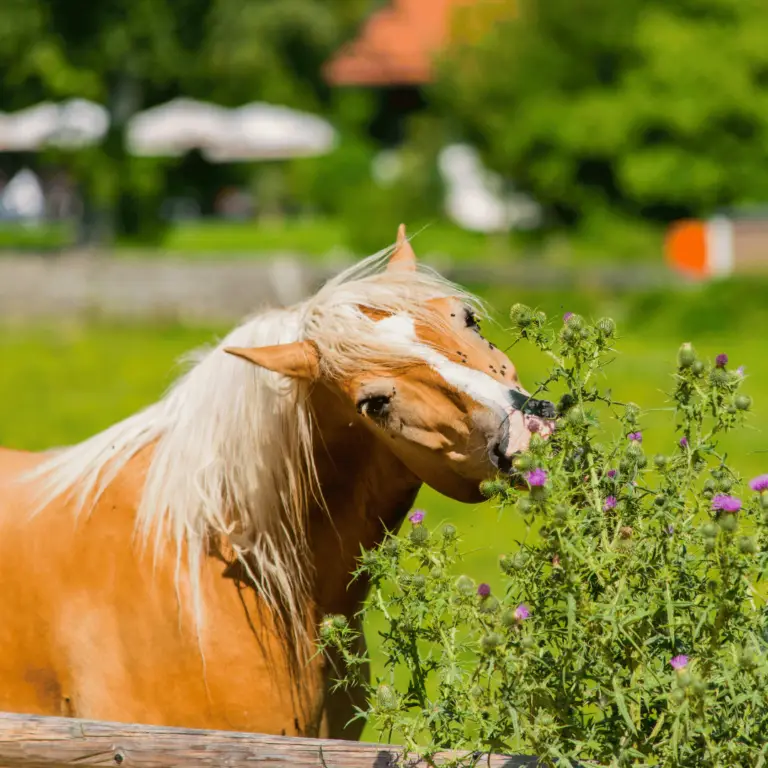
Equine Grass Sickness (Equine Dysautonomia)
Equine Grass Sickness (Equine Dysautonomia) This disease is life-threatening and should be treated by a veterinarian swiftly. Equine grass sickness

This disease is life-threatening and should be treated by a veterinarian swiftly.
Blue-green algae, or cyanobacteria, are microscopic organisms commonly found in freshwater environments worldwide. These algae can proliferate rapidly, forming dense blooms under certain conditions, such as warm temperatures and nutrient-rich waters, making the summer months more risky. However, some species of blue-green algae produce toxins harmful to horses if ingested.
Additionally, horses may exhibit muscle weakness, and difficulty standing or walking, and in severe cases, death may occur if prompt veterinary care is not provided. Prevention involves limiting access to contaminated water sources, such as ponds and lakes, and providing clean drinking water to horses to mitigate the risk of exposure to blue-green algae toxins. Early recognition of symptoms and rapid intervention are critical for the successful treatment of blue-green algae toxicity in horses.
Treatment for blue-green algae toxicity in horses involves immediate veterinary care, focusing on supportive measures to alleviate symptoms and minimize toxin effects.
Veterinary interventions may include intravenous fluid therapy to maintain hydration, administration of gastrointestinal protectants like activated charcoal to absorb toxins, and liver support medications to mitigate liver damage. Symptomatic treatment such as anticonvulsants for seizures and pain relief for abdominal discomfort may also be necessary. Environmental management is crucial, with restrictions on access to contaminated water sources and provision of clean drinking water. Continuous monitoring of the horse’s condition is essential, with adjustments to treatment based on response and symptom progression. Follow-up veterinary care is recommended to assess liver function and ensure the horse’s recovery.
Behavioural modification techniques, including positive reinforcement training and the use of anti-cribbing collars or devices, can help discourage the behaviour. In some cases, consultation with a veterinarian or equine behaviourist may be necessary to develop a comprehensive treatment plan tailored to the individual horse’s needs.
Preventing blue-green algae toxicity in horses involves proactive measures to minimize exposure to contaminated water sources. Limiting access to bodies of water where blue-green algae blooms are present is essential. Provide clean drinking water to horses to discourage them from drinking from potentially contaminated sources.
Regularly monitor water sources for signs of algae blooms and avoid turnout or grazing near affected areas. Prevent fertilizer or manure from getting into water sources. Keep horses away from water for over a week, after the use of algaecide. During trail rides, suspect stagnant water sources should be avoided.
Educate yourself about the appearance of blue-green algae and the environmental conditions that promote its growth to take timely preventive actions.

Digital health management offers numerous benefits in modern equine healthcare.
With the Happie Horse App, you can track symptom patterns and body values, such as Temperature, Pulse and Respiration. Allowing you to notice abnormal changes in body and behaviour early on, leading to more successful treatments.
The Happie symptom checker allows you to add all of your horse’s abnormal symptoms in order to present potential causes and diseases.

Equine Grass Sickness (Equine Dysautonomia) This disease is life-threatening and should be treated by a veterinarian swiftly. Equine grass sickness

Blue-green Algae Toxicity This disease is life-threatening and should be treated by a veterinarian swiftly. Blue-green algae, or cyanobacteria, are

Poisoning This disease is life-threatening and should be treated by a veterinarian swiftly. Poisoning can be caused by the ingestion